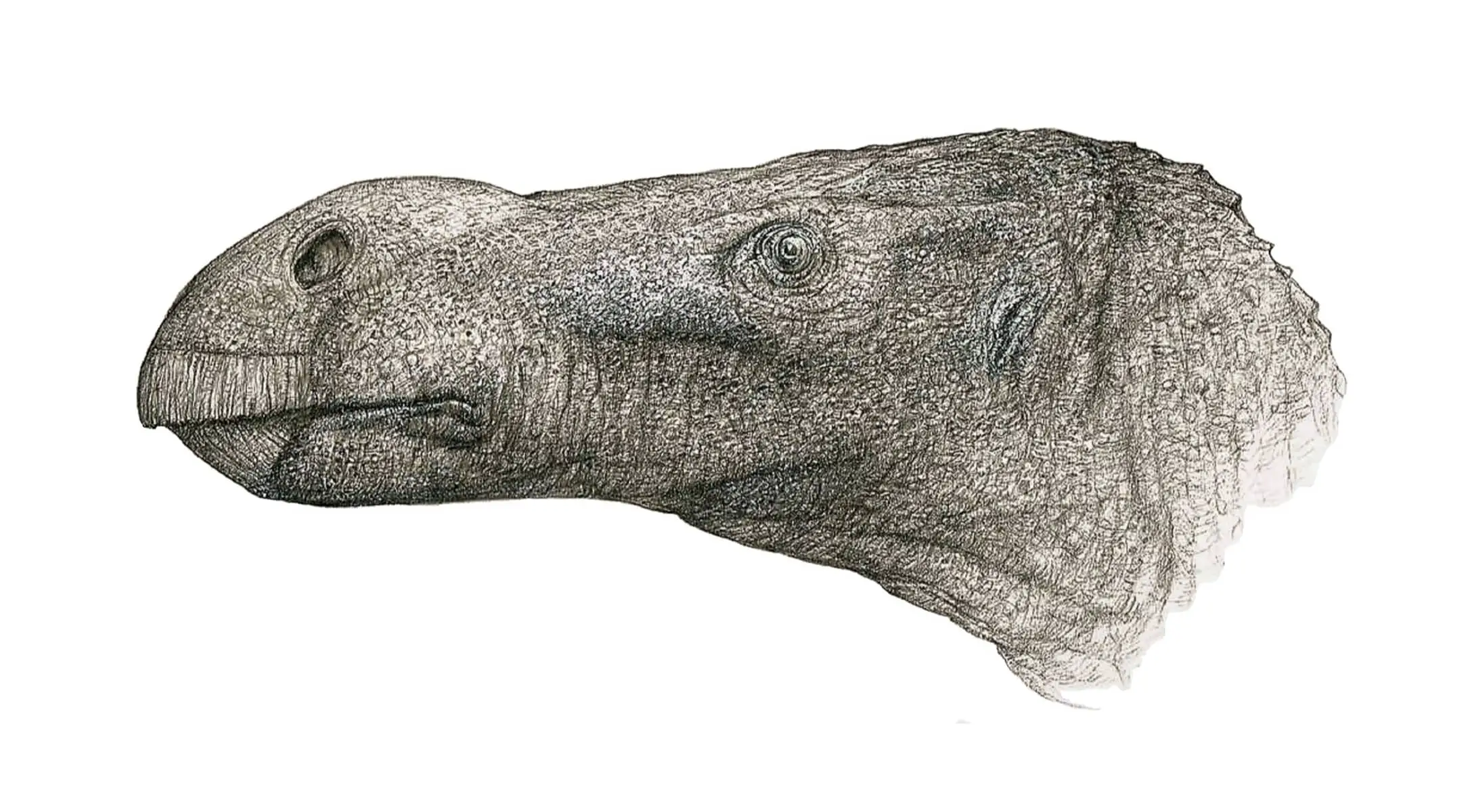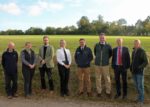A new dinosaur with an unusually large nose has been identified by University of Portsmouth and Natural History Museum scientists.
The new species, named Brighstoneus simmondsi, was discovered by a retired GP who was determined to prove that the two most common dinosaurs on the Isle of Wight – known as the ‘cattle of the Cretaceous’ – were not alone.
He embarked on the painstaking task of going through every single Iguanodon bone ever discovered on the Isle of Wight in the collections at the Natural History Museum in London and Dinosaur Isle Museum and was delighted to discover a remarkable nasal bone like no other.
Lockwood: Discovery made it one of the happiest days of lockdown
Jeremy Lockwood, who is currently studying for a PhD in the School of Environment, Geography and Geosciences at the University of Portsmouth, said,
“For over 100 years, we’d only seen two types of dinosaur on the Isle of Wight – the plant-eating Iguanodon bernissartensis and Mantellisaurus atherfieldensis. I was convinced that subtle differences between bones would reveal a new species, so I set out to measure, photograph and study the anatomy of each bone.
“My background is medicine, so I’ve studied anatomy and was always struck by the fact that the bones we find in humans all look exactly the same. I’ve seen dinosaur bones that are reportedly from the same species, but I’ve been baffled as to why they would look so different.
“Last year during lockdown – after four years of going through boxes and boxes of bones – I decided to reconstruct the skull of a specimen, which had been in storage since 1978, and to my astonishment I noticed the end of its nose was bulbous.
“This discovery made it one of the happiest days of lockdown because it was a sign there really was something different about this particular dinosaur from the Isle of Wight.
“Then I noticed the teeth were different with ridges on both sides, so I shared my findings with Professor Dave Martill from the University and Dr Susannah Maidment from the Natural History Museum. We were all convinced it was a new species, so I’ve spent months describing it in detail.”
Use of the bulbous nose
The bulbous nose could have been used as a sexual signal to attract females or as a warning to scare away male opponents.
The new species was excavated in 1978 but was found alongside a theropod dinosaur Neovenator salerii, which at the time was the most spectacular meat-eating dinosaur found in Britain.
Lockwood: Was locked away in storage
Jeremy said,
“If you want to discover a new dinosaur go into the basement of a museum rather than the field.
“The finding of such an impressive carnivore all those years ago overshadowed the bones of Brighstoneus simmondsi, so most of it was locked away in storage.”
The naming of the dinosaur
Brighstoneus is named after the village of Brighstone on the Isle of Wight, which is close to the excavation site and was home to the Reverend William Fox, a celebrated Victorian fossil collector whose discoveries had a major impact on early dinosaur research.
Jeremy said,
“When I was a little boy my Father took me to an antique fair and bought me a Moroccan dinosaur bone, which was the jewel of my collection. To go from being the proud owner of a piece of Moroccan bone to naming a new species in England is wonderful.”
One of the best places in Europe for dinosaur finds and research
Dinosaur Isle Museum curator, Dr Martin Munt, said,
“Our internationally important fossil collection continues to provide new and exciting glimpses into the past. Brighstoneus simmondsi is named after the village of Brighstone, and the original finder, local fossil collector Keith Simmonds.
“The Dinosaur Isle collection contains many specimens collected from accurately recorded areas, which makes it of greater use for scientific study than older collections with little information associated with the bones. Because of this the Island and our collection has become one of the best places in Europe for dinosaur finds and research. Best of all, anyone can visit us and take a look at the exciting finds we have at the Dinosaur Isle Museum.”
The paper is published in the Journal of Systematic Palaeontology.
News shared by Isle of Wight council press office, in their own words. Ed
Image: © John Sibbick





